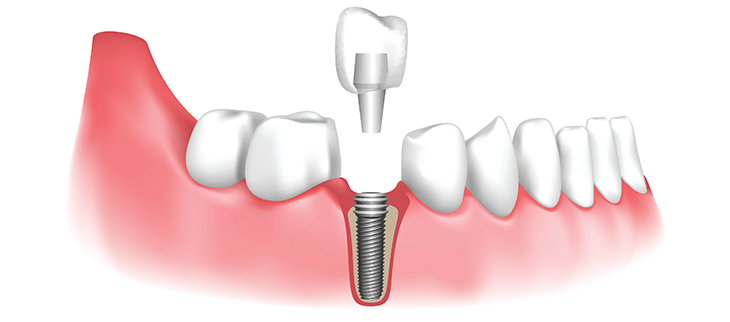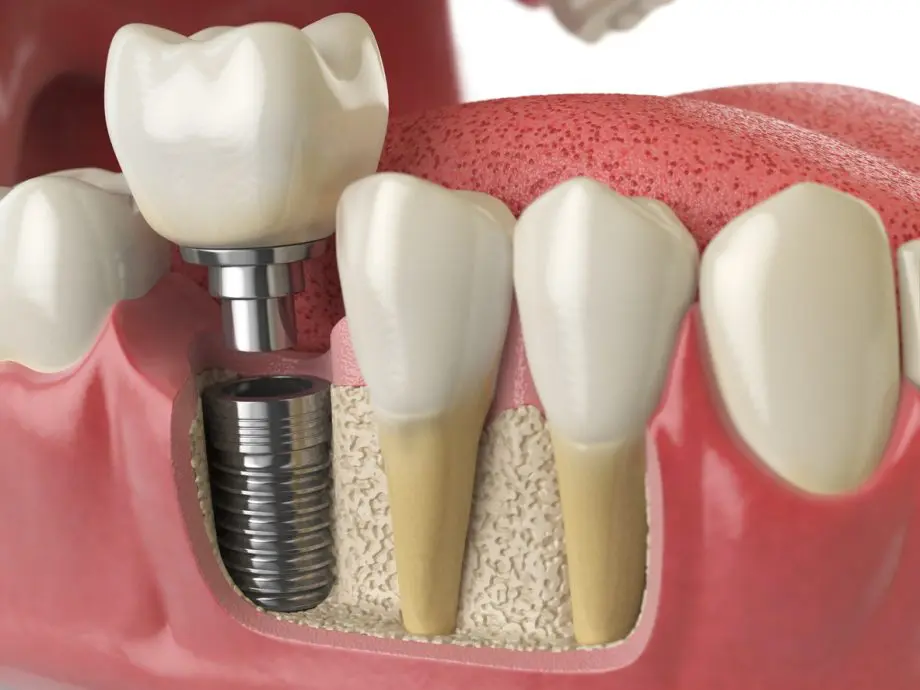Family Dental Clinic Granville OH Dental Implant Benefits
Family Dental Clinic Granville OH Dental Implant Benefits
Blog Article
Family Dental Clinic Galena OH Types of Dental Implants
Dental implants have revolutionized restorative dentistry, providing a reliable alternative to traditional methods for changing missing teeth. The integration of dental implants with the jawbone useful link is a complex organic click this process generally recognized as osseointegration. This course of not only anchors the check implant securely but additionally helps preserve jawbone health, preventing the bone loss typically associated with missing teeth.
The dental implant itself is often manufactured from titanium, a biocompatible materials that the physique accepts. When an implant is placed in the jaw, it's designed to intently mimic the basis of a natural tooth, which is crucial for effective integration. The titanium surface encourages the growth of bone cells, enabling the jawbone to bond with the implant over time.
Dental Care Associate Hartford OH Dental Implant Procedure: What You Need to Know Before Surgery

Several levels represent the osseointegration process. Initially, when the implant is surgically positioned into the jaw, a healing period is required for the surrounding bone to begin out reworking. During this time, the bone grows across the implant, making a solid and steady foundation. This healing time can differ, usually lasting a quantity of weeks to a few months, depending on varied components, including the individual's general health and the precise location of the implant.
The role of surrounding bone quality is crucial. High-density bone usually offers a greater surroundings for osseointegration compared to lower-density bone. Specialists usually evaluate the quality and amount of bone earlier than the implant placement to discover out the best course of action, which can involve bone grafting procedures in cases of inadequate bone volume. Grafting enhances the chances of profitable integration by making a extra robust base for the implant.
The biological mechanisms behind osseointegration contain various cellular activities. Osteoblasts, the cells responsible for bone formation, migrate to the implanted space and begin to put down new bone materials. Simultaneously, the floor of the titanium implant undergoes changes that facilitate this bonding course of. Some newer implant designs incorporate surface modifications to further improve biological integration.
Orthodontics Alexandria OH Common Dental Implant Problems and How to Avoid Them
Throughout the integration course of, the function of blood provide can't be overstated. An adequate blood supply nourishes the bone and ensures the correct functioning of the cells involved in the therapeutic and integration process. Improved blood circulate leads to faster therapeutic and higher outcomes, which is why surgical strategies and aftercare typically prioritize sustaining or enhancing blood circulation to the positioning of the implant.
Improvements in surgical methods also contribute significantly to the success rates of dental implants - Orthodontics Pataskala OH. Minimally invasive methods and guided implant surgery allow for more precise placement of implants, lowering trauma to the encircling tissues and doubtlessly dashing up the therapeutic time. The much less trauma experienced by the jawbone can result in a more favorable environment for osseointegration
Dental Center Galena OH Your Local Guide to Dental Implants

How an individual maintains their oral hygiene after receiving an implant can considerably affect integration success. Proper care across the implant web site helps prevent infections, which may disrupt the healing course of. Regular dental check-ups are also important to watch the health of both the implant and the encircling gum and bone tissues.
Long-term success with dental implants is commonly linked to elements similar to way of life choices. Patients who smoke or have uncontrolled diabetes may expertise lower charges of osseointegration. These conditions intervene with healing and blood provide, making it crucial for people contemplating implants to debate their health history with their dentist.
After the profitable integration of the implant, the subsequent phase includes putting the prosthetic restoration, such as a crown. The final restoration should match comfortably and functionally integrate with the existing dentition. Dental Care Associate Granville OH. Proper alignment and occlusion play important roles in how well the implant will carry out over time
Pediatric Dentist Galena OH Dental Implant Recovery
Dental implants present a long-lasting answer that helps preserve the integrity of the jawbone. When a tooth is misplaced, the bone that after anchored its root begins to deteriorate. Implants stimulate the bone similarly to natural teeth, triggering the jaw to take care of its density and power. This stimulation is essential for preventing the sunken facial appearance that always accompanies tooth loss.
In conclusion, the integration of dental implants with the jawbone includes a fancy interplay of organic and mechanical factors. Understanding the osseointegration course of can empower individuals to make knowledgeable decisions about their dental health. By appreciating the significance of choosing a talented dental professional and adhering to post-operative care, patients can obtain optimum outcomes and revel in restored function and aesthetics for many years to come.

- Dental implants mimic the structure of natural teeth and supply a secure basis by integrating with the jawbone via a course of known as osseointegration.
- The biocompatibility of titanium, commonly used for dental implants, performs an important function in selling successful bonding with bone tissue.
- Osseointegration sometimes begins within a couple of weeks post-surgery, with the implant floor progressively changing into enveloped by bone cells.
- The mechanical stability of implants is enhanced by their surface roughness, which inspires bone progress and improves the integration process.
- Immediate loading of implants may be possible in sure instances, depending on bone density and the patient’s overall dental health.
- Over time, the jawbone responds to the presence of an implant by undergoing transforming, contributing to the long-term success of the process.
- Factors such as oral hygiene, smoking habits, and systemic medical conditions can considerably impression the integration process of dental implants.
- Regular follow-ups and imaging methods, similar to X-rays, might help monitor the success of osseointegration and detect potential problems early.
- The preservation of surrounding bone structure is enhanced by the stimulation offered by dental implants, which might help prevent bone loss in adjacent areas.
- Successful integration not only restores functionality to the tooth but also contributes significantly to the aesthetics of the patient's smile and facial structure.undefinedWhat are dental implants and the way do they work with the jawbone?undefinedDental implants are titanium posts surgically inserted into the jawbone to serve as synthetic tooth roots. Once positioned, they endure a course of referred to as osseointegration, where the jawbone naturally fuses with the implant, creating a stable basis for the replacement tooth.
How does osseointegration occur?undefinedOsseointegration is a biological course of where bone cells develop and fasten to the surface of the dental implant. This usually takes several months, during which the implant becomes firmly anchored within the jawbone, making certain strength and stability for the bogus tooth.
Johnstown Dental Condit OH Common Dental Implant Problems and How to Avoid Them
What components affect the success of dental implant integration?undefinedKey factors include the standard and quantity of the jawbone, the patient's overall health, and oral hygiene practices. Adequate bone density is crucial, as inadequate bone could impede profitable integration.
Is the pain during dental implant placement significant?undefinedMost sufferers report minimal discomfort during the procedure, as native anesthesia is used. Post-operative pain is mostly manageable with over-the-counter pain aid medications, and most discomfort subsides inside a couple of days.
How long does the mixing process take?undefinedTypically, osseointegration takes about three to 6 months. However, this could differ based on particular person therapeutic processes and the specific conditions of the jawbone.
Can anyone get dental implants?undefinedMost people are candidates for dental implants; nonetheless, certain conditions corresponding to uncontrolled diabetes or severe gum disease could affect eligibility. A thorough evaluation by a dental skilled is necessary to discover out suitability.
Mono Implants Hartford OH Single-Tooth Implants: Everything You Need to Know
What could be carried out if there isn't sufficient jawbone for integration?undefinedIf there could be inadequate bone, procedures like bone grafting could be performed to augment the jawbone. Once the graft heals, dental implants can then be positioned, allowing for successful integration.
Are there long-term care concerns after getting dental implants?undefinedYes, maintaining excellent oral hygiene is important for the longevity of dental implants. Regular dental check-ups and cleanings also assist prevent problems and make certain the ongoing health of the encompassing bone and gum tissue.
Family Dental Clinic Columbus OH Step-by-Step Guide to Dental Implant Procedures
How do dental implants compare to different tooth replacement options?undefinedDental implants are often considered superior to dentures and bridges because of their sturdiness, stability, and the preservation of jawbone health. Unlike other options, implants fuse with the jawbone, which helps preserve bone density and facial structure.
Report this page